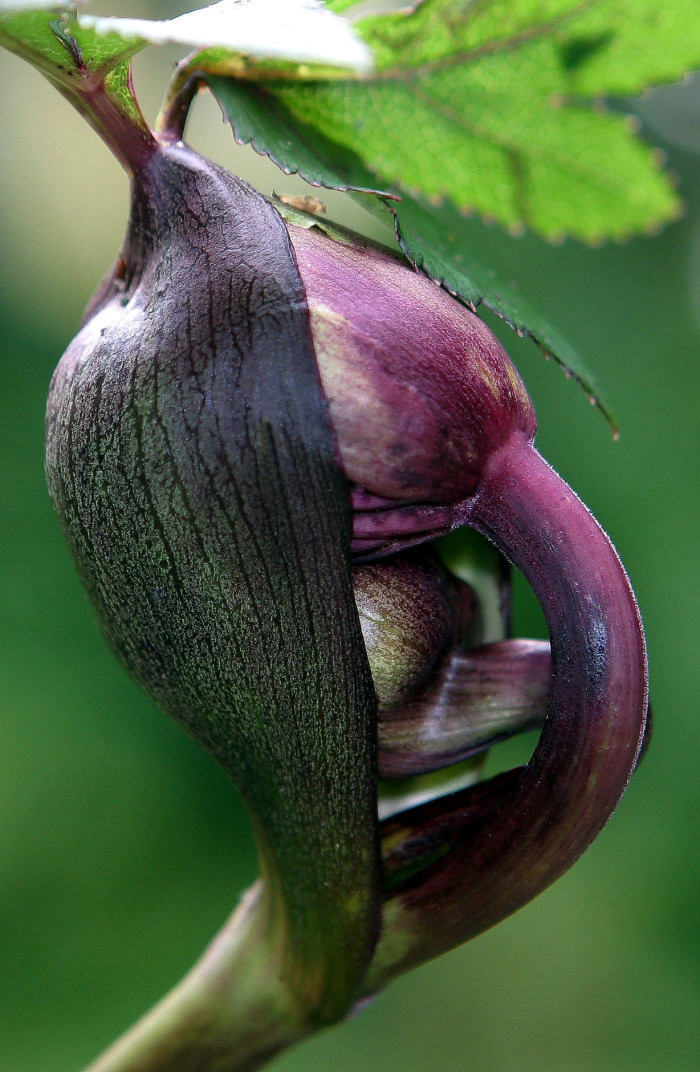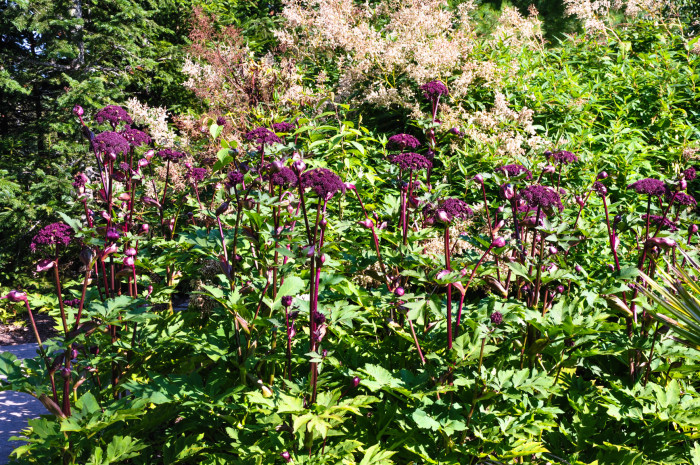You know when you have an idea in mind of how you would like a design to perform when it gets mature? And then it really happens the way you envisioned? This spring, I wanted to have a mass planting of Angelica gigas. I have never seen the plant planted en masse and I had the perfect spot beside of a huge Persicaria. The Angelica would provide a step down in height from the 9′ tall Persicaria.
We cleared the bed back in April to make way for the grouping of plants. The soil is rich and well drained. The exposure provides full sun in the morning and then bright shade in the afternoon. This seems to be the perfect spot for Angelica. I had high hopes for all of the plants to come up and flower at the same time. Back in mid-July, the plants began forming enormous, surreal flower buds. Everyone started asking what is that plant. Margaret Roach, in her blog, A Way To Garden, wrote about this phenomenon. When Angelica plants start to set those huge buds about 4-5′ above the ground, everyone starts to notice. I may be dating myself but we could also call this the E.F. Hutton plant. Remember those commercials in the 80’s? “When E.F. Hutton talks, people listen.” Well, when Angelica gigas, sets buds, people notice.
Just this past week, the entire mass began to flower. Then, not only did the people in the garden notice but the honey bees did as well. The big, 8″ diameter, purple flowers are covered with honey bees. I am amazed that we planted these plants as 1 gallon, second year plants in late April and they are now close to 6′ in height. Again, this is another plant that really thrives in our coastal Maine environment.
Angelica gigas is a short lived perennial or monocarpic biennial. This means that all of our plants will likely die at the end of the season after they set seed. On our to-do list is to scatter the seeds of Angelica this fall. Next spring, we will likely have seedlings of Angelica scattered throughout the plant bed. We will then select the ones we want to cultivate and nurture them throughout the year. Our next group of flowering plants will not be until 2015 so maybe this will keep our guests in suspense and wanting to come back to see the display again.
There are other Angelicas in the world of horticulture and based upon this year’s performance, I think we will add more selections to the gardens here at CMBG.
-Rodney
Photos: Wikipedia, Rodney Eason


I used just one angelica in a border once, and it woke up everything else. Are you going to candy any of the stems? I think that’s how it’s used as a culinary herb.
Oh. My. God. I’m totally smitten by this plant, and have to have it. I think White Flower Farm sells it? I remember falling in love with this plant on a tour of a monastery. It was in a medicinal herb garden. I looked it up, and apparently extract from Angelica gigas could reduce Alzheimer’s symptoms. Who knew? http://tinyurl.com/mwsr28h